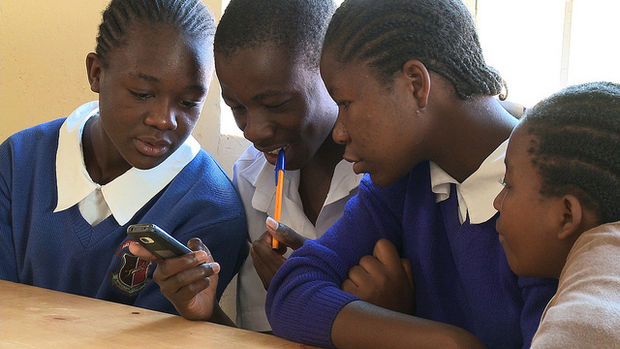NEWS
Focusing On Quality Education In Sub-Saharan Africa

Primary school enrollment has increased from 59 percent to 77 percent in sub-Saharan Africa over the past decade. This increase is due in part to the drive and commitment by governments in the region to achieve universal primary education set by the Education For All declaration established in Jomtien in 1990 and the Millennium Development Goals set in Dakar in 2000. However, much remains to be done. With a regional fertility rate of 5.1, compared to a global average of 2.4, and a 2030 projected population size of 1.5 billion people, there needs to be an increase in the supply of educational opportunities for all children in order to meet the growing demand in sub-Saharan Africa.
Even as access to education has improved in sub-Saharan Africa, learning achievement remains alarmingly low. Regional assessments show that 28 percent of Tanzanian sixth grade pupils are reading at grade level, only 19 percent in Kenya and less than 10 percent in Uganda. This low and uneven level of knowledge acquisitionduring the foundational years of primary school has adverse implications for knowledge and skills acquisition in later grades and for the long-term development and economic growth of the region.
The Africa Learning Barometer illustrates the urgent need to accelerate education progress and improve equity in learning outcomes. Disparities in achievement exist: between boys and girls – in Malawi, 52 percent of girls are not learning basic competencies at the end of primary school compared to 44 percent of boys; between urban and rural communities—in Tanzania, 10 percent of rural children are not learning compared to only 4 percent of urban children; and between the wealthy and the poor, which is the most divisive of disparities – in Botswana, 7 percent of the wealthy are not learning compared to 30 percent of the poor.
The challenge facing the region now is to continue to expand access, particularly for the most marginalized, while also implementing policy and programs to address the achievement gap. Evidence shows that policies to drive access, especially if poorly implemented, can inadvertently hurt school quality. In Kenya, after the implementation of free primary education in 2003, schools stopped receiving tuition for enrollment, yet government disbursements stalled. Schools had fewer resources for education at a time when enrollment was increasing dramatically. During this time, many parents moved their children from public to private schools despite an increase in costs.
CHALLENGES IN MEASURING LEARNING
Although there are assessments at regional and national level in sub-Saharan Africa, there is no comparable measure of learning across countries (World Bank, 2009) to show learning challenges in context and to benchmark countries’ progress. The Africa Learning Barometer used assessment data on literacy and numeracy at primary for 28 countries. Although data was not comparable, it sheds light on the depth and nature of the problem. More needs to be done to understand the nature of the learning challenge affecting children’s development at pre-school, primary school and post-primary school and across a range of learning domains.
The multidimensional nature of quality, quantity and relevance makes measurement complex. Education quantity can be measured using enrollment rates, school attendance rates, school drop-out rates or completed years of schooling, each of which conveys different information. Learning outcomes can be measured in a variety of ways, including mastery of cognitive abilities, knowledge acquisition or acquisition of practical skills. In the economics of education literature, measurement of education quality has typically focused on education inputs, although there is an increasing awareness of the need to focus on learning outcomes and the learning processes. Measurement of education relevance in relation to the labor market has been more limited, although there is a groundswell of private sector interest in the topic, leading to recent research by McKinsey & Company and others.
Current measures of education quality in sub-Saharan Africa often fail to capture important aspects of learning that cannot easily be demonstrated by cognitive tasks. For example, children from pastoral communities may not be able to perform simple addition but may benefit from a teacher’s guidance to become more responsible or to use logical reasoning to care for a large herd and identify when livestock are missing. Children learn productivity-enhancing behavioral attributes that are acquired through schooling, such as punctuality, teamwork, honesty, interpersonal skills and loyalty even if they are not building academic skills. These attributes are rarely accounted for in current forms of assessment though they are linked with a range of life outcome